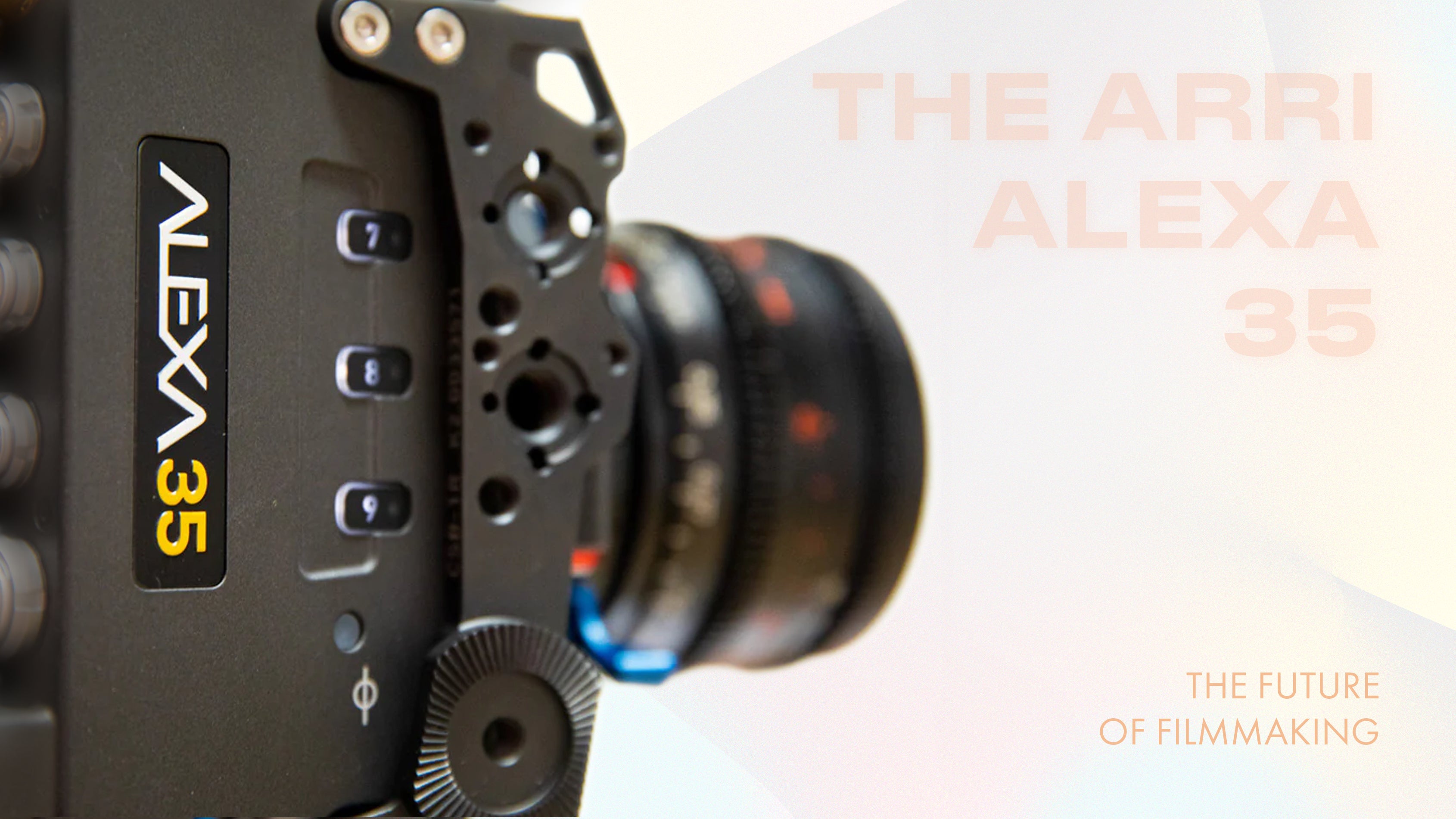
“ALEXA 35 raises the bar even higher with a new Super 35 format 4.6K sensor and REVEAL Color Science.” Walk us through these two new developments with ARRI and what makes them noteworthy.
Matt Carroll (MC): When looking at what makes the ALEXA 35 such a big step up from its predecessors, you have to start with the ALEV-IV sensor design. All ARRI cameras released since the original ALEXA Classic in 2010 were built with the ALEV-III as their framework. As a result, this new sensor in the ALEXA 35 is the first major update to their imaging technology in over ten years.
Fundamentally, this means that we are seeing a shift in the tech used in ARRI cameras that will set the course for, potentially, the next decade of filmmaking. Major improvements include: an expanded exposure latitude to an impressive 17-stops of dynamic range; a dramatically improved lowlight performance through the implementation of their Enhanced Sensitivity mode; REVEAL color science, which is the first major overhaul to ARRI color science since the company began making digital cameras; and the ability to apply “textures” to the image in real time to allow for flexible and creative workflows.
With the increased latitude from the sensor, please describe in-depth what that means for cinematographers and colorists alike.
MC: Functionally, the increased exposure latitude allows for filmmakers to capture stunningly balanced images right out of camera, often in situations that would have literally been impossible on previous systems because of the jump between the shadows and highlights. Depending on your selected sensitivity, you can have up to 11 stops over middle gray that are within the latitude, as well as up to 9.7 stops below middle gray (when the sensitivity is set lower).

What is the “Enhanced Sensitivity” mode and how does that help improve the image in low-light situations?
MC: The “Enhanced Sensitivity” mode functions by taking two frames of a clip, comparing them to each other to determine what is digital noise and what is the actual image, then finally using a proprietary algorithm to effectively subtract the digital noise print from the resulting clip. The entire process provides exceptionally clean images from ISO 2560 to 6400.
What are your thoughts on the ARRI textures pack?
MC: I think that the textures are a really interesting concept for ARRI to introduce to their flagship camera system. As incredible as post-production workflow can be, it is critical that the image on set looks as close as possible to the final product in order for the director and cinematographer to ensure that the project has the look they are attempting to achieve. As a result, the ability to shift the image in-camera allows for maximum flexibility for filmmakers. The addition of “textures” which can emulate film grain, among other things, gives creatives more creative freedom.


Shots from ARRI that utilize the ARRI ALEXA 35 new textures pack | ARRI
What reason would someone have for renting the ARRI ALEXA 35 over a different ALEXA system (such as the ALEXA Mini and ALEXA Mini LF)?
MC: The primary reason a production might consider the ALEXA 35 over an alternative ARRI camera is the dramatic overhauls to core systems that affect its usability on set. Though the camera might cost more to rent each day, the savings come from the addition of features that allow for a crew to continue shooting through unpredictable conditions like running out of light at the end of the day and unexpected inclement weather. Additionally, the ALEXA 35 is an extremely intuitive camera system capable of catering to a diverse level of user expertise. This ensures ease-of-use and efficient operations for anyone that might be working with it.
On a practical level, what can cinematographers expect when it comes to the actual handling of the camera body when compared to previous models?
MC: In many ways, the ALEXA 35 is a similar build to the ALEXA Mini and the ALEXA Mini LF. The small changes that have been made, however, are welcome. The attached battery mount, operator-side settings control, additional mounting locations/accessories, and more flexible/articulating EVF mount, are all features that operators and camera assistants have been asking for in previous cameras. Lastly, they constructed the internal component design around the heat sink and fan assembly in order to make it “splash resistant”, allowing for the camera to be in light inclement weather without the concern for water damaging integral circuitry. ARRI really listened to their audience and worked hard to engineer each component with intention - and it certainly shows!

A close up of the ARRI ALEXA 35 demonstrating the flexible mounting options | Camera Ambassador
What are some potential drawbacks to the camera?
MC: Many legacy accessories don’t interface with the camera correctly. This incompatibility means that many users who had specific accessories may have to re-purchase updated items that work correctly. Similarly, the camera is now operating at 24V instead of 14V. Most batteries that are in circulation are incompatible, which means that you may now need new batteries. Finally, the price point for rentals is a bit of a jump from previous systems as a result of all the additional features that have been added to make it as “future-proof” as possible.
What excites you most about the camera?
MC: Personally, as a cinematographer, I am mostly excited about the flexibility that the new sensor allows. Having a greater exposure latitude ensures that my images are always balanced, even when working in difficult and uncontrollable lighting conditions. While, of course, the tech is not foolproof, it does help when the tool you are using is actively working to correct any potential “mistakes” that can harm the image you are trying to create.

In summary, the ARRI ALEXA 35 camera introduces these new features:
|
|
|
Interested in scheduling a demo with the ARRI ALEXA 35? Email rentals@cameraambassador.com today.



